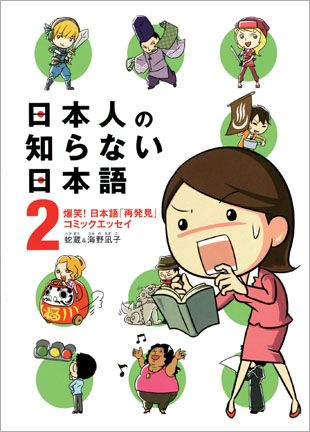

Umino mentioned how some beginner students had asked her to teach the Kansai dialect as spoken in Osaka. One recurring theme in the manga is the mismatch between the highly controlled language in student’s textbooks and what they hear in their everyday lives, which is often nonstandard or colloquial. Although it became apparent that not all students were volunteers, many of them being forced to learn by their companies or parents, she soon came to enjoy the lively multicultural atmosphere of basic-level classes. As she explained in an interview with, she made the switch to instructing foreign students because she thought it would be fun to teach people who had chosen to learn. Umino began by teaching Japanese to Japanese students at an Osaka high school. (From Nihonjin no shiranai Nihongo) Standard is Safest
#NIHONJIN NO SHIRANAI NIHONGO SUB ENG SERIES#
While it was written originally for Japanese readers, the manga format makes the series quite approachable for foreign learners. Students grill Umino with testing questions, and the discussions regularly veer into linguistic and cultural differences between Japan and their own countries. They cover such areas as keigo (honorific language), counter words, and the history of hiragana and katakana. There are now four main entries and a supplementary workbook in the series-which has sold more than 2 million copies-as well as a television adaptation. The manga also appeals through comical misunderstandings and cross-cultural communication with a cast of enthusiastic international students. As the title Nihonjin no shiranai Nihongo (The Japanese the Japanese Don’t Know) indicates, on one level it was a chance for Japanese people to rediscover their own language. When the Japanese language teacher Umino Nagiko turned her classroom experiences into a manga, created with her friend Hebizō, it became an instant bestseller. Hard-code the subs onto the video, then layer the other set over them.Nihonjin no shiranai Nihongo (The Japanese the Japanese Don’t Know) sub/.idx files are very common they’re a huge pain because the subtitlesĪre stored as images and require OCR. May expand it once I have tried a few other shows. Here is the script I wrote it’s pretty specific to one set of subs, but I Here is an example set of subs for 日本人の知らない日本語 (“Japanese that
#NIHONJIN NO SHIRANAI NIHONGO SUB ENG UPGRADE#
Upgrade any v4 subs to v4+ for sanity reasons.

To ‘bottom left’ for one format, but ‘top centre’ for another). Which have completely different alignment values (e.g. The only snafu is that there are two formats (‘v4’ and ‘v4+’) ass is a great format because subs don’t have to be ordered by time Of the existing file, using the new ‘Japanese’ layer. srt to extract subtitle lines and timings.


 0 kommentar(er)
0 kommentar(er)
